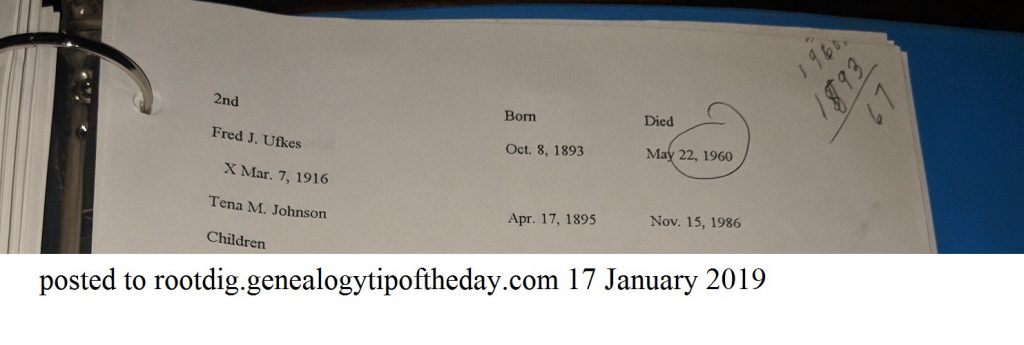
My maternal grandmother, Dorothy (Habben) Ufkes, probably “did the math” on this page in her copy of the “Ufkes” book. The image was originally going to be used to remind readers of the importance of not subtracting the year of birth from the year of death to arrive at an individual’s age. The Fred J. Ufkes (her father-in-law) actually had not had his birthday when he died in 1960 and was 66 years of age, not 67. That’s an important point, but citing this image is an even better discussion.
There have been several “Ufkes books” as they are affectionately called published since the mid-1950s. One was compiled in the 1950s, one in 1980, and another one in the 1990s. They were privately published. I don’t have just one of them. I have at least one of the 1950 versions, at least two of the 1980 version, and at least two of the one published in the 1990s.
And I need to do a little thinking when I cite these publications because while they contain the same information (with updates), my great-grandmother’s copy and my grandmother’s copy essentially became scrapbooks for clippings that were taped or stapled into the original book. Both of them have notations about individuals “life events” that were not printed in the book or happened after the book was published.
I just can’t cite the book along with the year it was printed in those cases. I need to cite the specific book I have. It’s not really just a book any more. It is a unique archival item–at least as far as those notes and included clippings are concerned.
So if I’m going to use Grandma’s 1980 Ufkes book as a source for something that she wrote in it, I’m going to have to cite that specific one–the one that she and my Granddad had and that I now have in my personal collection of materials. Citing printed information doesn’t really require a reference to the specific copy that I have. Otherwise it does.

No responses yet